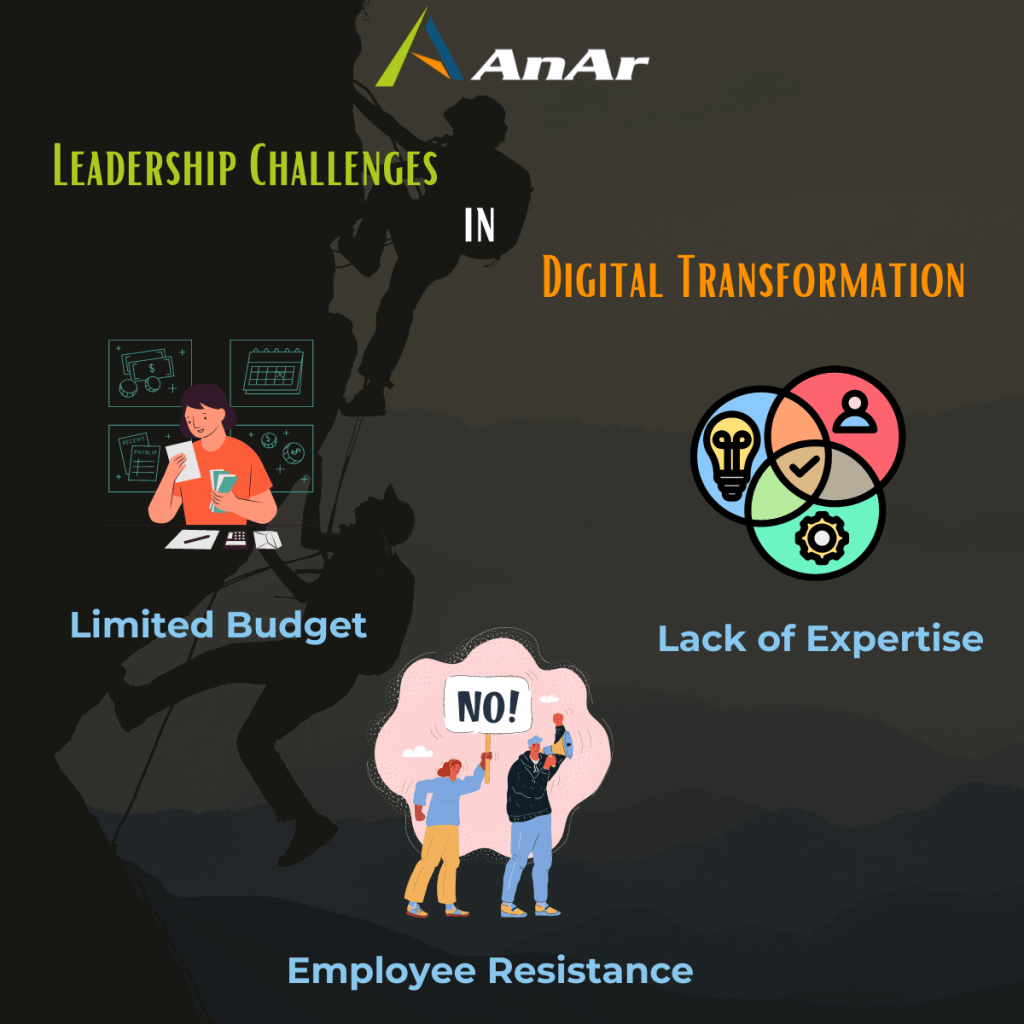In today’s fast-changing world, digital transformation is essential for companies that want to keep up with the competition. But this isn’t just about using new technology; it’s about changing the whole way a company works. At the heart of this big change is leadership. Good leaders don’t just use new tech—they inspire and guide their teams through the changes.
Consider a common scenario: your organization is transitioning all business processes to a new digital platform. Many employees, unfamiliar with the platform, might resist this shift. Understanding and addressing these concerns early is key to smooth digital adoption.
Have you ever faced such a situation in your organization?
Digital transformation requires substantial changes at both the individual and process levels. It’s crucial for employees to acquire the necessary skills and adaptability to thrive in a digitally transformed environment. Also, organizational processes need a rework and realignment towards the company goals.
How can leaders initiate and sustain digital transformation within their organizations?
Let’s explore effective strategies for guiding your team through this transition.
Leaders play a crucial role in steering an organization towards digital transformation. They act as an intermediary between the employees and the management, create new goals, delegate responsibilities, and tackle the challenges.
In this blog, let’s decode the challenges leaders face while leading a digital transformation initiative and how they can handle these effectively.
What Challenges Do Leaders Face During a Digital Transformation?
Leaders often encounter several obstacles during digital transformation, including employee resistance, a deficiency in necessary expertise, and constrained budgets.
Let’s understand these challenges in detail:
Employee Resistance
Employees are used to doing a task in a particular manner. Digital transformation requires them to upskill and be well-versed digitally. Not every employee will be ready to undergo the change or a rigorous training program. In this case, it becomes challenging for leaders to motivate the employees and push them to adopt new processes and digital technologies.
Lack of Expertise
The second challenge involves the leaders themselves not having the right expertise to lead a team through the transition. Either they lack the requisite communication or the leadership skills to motivate the team. Or, they do not want to let go of the old practices and come out of their comfort zone.
Limited Budget
It’s your responsibility as a leader to make the best use of the resources and achieve the digital transformation aim. At times, leaders have to find a way to manage the digital transformation despite minimum budget allocation. You may also require multiple rounds of financial requirements.
In the next section, let’s understand how organizations can be well-versed in leading digital transformation despite the challenges mentioned above.
Leading Digital Transformation: Role of a Leader

Let’s understand in detail what it means to lead digital transformation as a leader of an organization.
Be the Change
As a leader, you must lead from the front and practice what you preach. If you want employees to adopt the digital transformation, you need to lead the change. For example, imagine your organization is planning to shift to the cloud. Before asking your employees to use digital tools, you need to be well-versed in the same.
Take some time to learn the collaboration, communication, and project management tools. Understand how these tools enhance organizational productivity. In this way, you can inspire your subordinates to make a digital transition.
Better Communicate the Transition
Effective communication is a cornerstone of leadership. Leaders must articulate the vision and details of digital transformation clearly and persuasively to their teams. When you are leading the digital transformation, ensure that you project the benefits of the transition. Unless employees see a clear advantage in learning digital skills, they don’t get the motivation to take the next step.
Reorganize the Employee Roles
The reorganization of employee roles is a major part of leading digital transformation. As a leader, you need to decode the changed work scenario. For instance, you need more human resources to drive the digital transformation. Some employees are good at coding; others are good at using collaboration tools. Similarly, some employees need less time to do a task. You need to delegate the right tasks to different employees based on their capabilities.
Identify Training Needs
Training is a crucial aspect of any transition. Digital transformation requires employees to upskill themselves. They need to use communication, collaboration, and project management tools effectively.
As a leader, you need to identify the type of training for each employee. Some learn visually, while others are better at practical learning scenarios. Based on the requirements, try to get in-house or external training help for your employees.
Get Other Leaders on Board
Are you a team player? What is the relationship that you share with other leaders in an organization? Are you working together with the other leaders in leading the digital transformation? If so, digital transformation in your organization will go on smoothly. Always keep other leaders informed about an organizational change. They can give you suggestions to carry forward the transition better. Also, the other leaders can motivate their team members in leading the digital transformation.
Track the Outcome of Changes
You have identified the digital transformation roadmap. Your employees are motivated. They enthusiastically attend the training sessions. Also, you have the full support of your co-leaders in facilitating change. What next? It’s time to track the changes and see if the digital transformation is successful. Take feedback from your employees and understand their experience of using digital tools. You can facilitate a review of the digital tools in case of any employee concerns.
Final Thoughts
In conclusion, the journey towards digital transformation is complex and filled with challenges, but the role of a leader is indispensable in navigating this terrain. From managing resistance to fostering skill development and ensuring effective communication, leaders must tackle various obstacles head-on. However, with the right strategies and support, these challenges can be overcome, leading to successful and sustainable digital change.
At AnAr Solutions, we understand the importance of leadership in driving digital healthcare transformation.
Our team of experts partners with organizations to provide guidance, tools, and solutions that enhance leadership capabilities and facilitate smoother transitions.
Whether you’re just starting out or looking to optimize existing digital processes, AnAr Solutions is here to help you every step of the way, ensuring your digital transformation journey is a resounding success.






